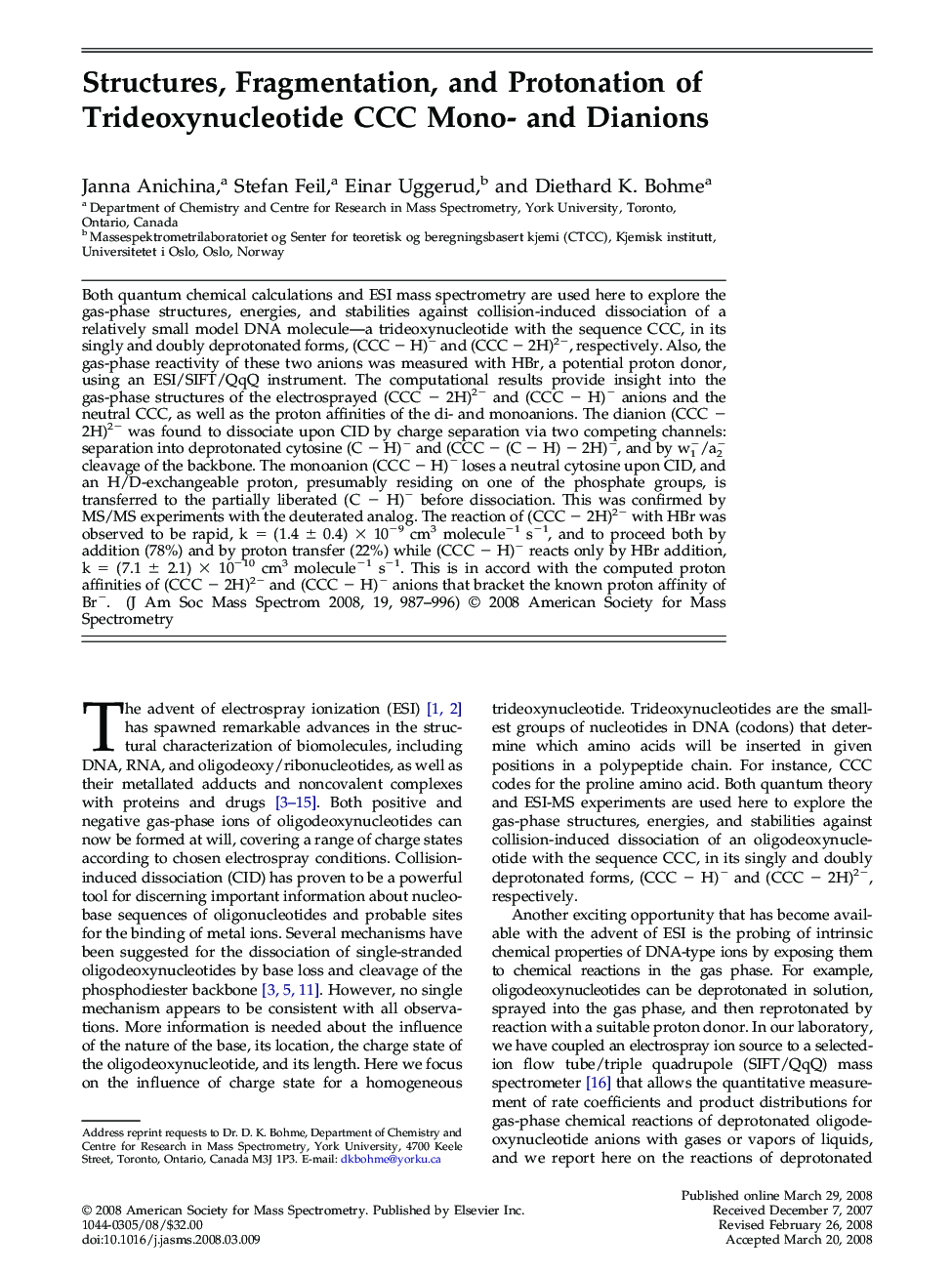| Article ID | Journal | Published Year | Pages | File Type |
|---|---|---|---|---|
| 1195319 | Journal of the American Society for Mass Spectrometry | 2008 | 10 Pages |
Both quantum chemical calculations and ESI mass spectrometry are used here to explore the gas-phase structures, energies, and stabilities against collision-induced dissociation of a relatively small model DNA molecule—a trideoxynucleotide with the sequence CCC, in its singly and doubly deprotonated forms, (CCC − H)− and (CCC − 2H)2−, respectively. Also, the gas-phase reactivity of these two anions was measured with HBr, a potential proton donor, using an ESI/SIFT/QqQ instrument. The computational results provide insight into the gas-phase structures of the electrosprayed (CCC − 2H)2− and (CCC − H)− anions and the neutral CCC, as well as the proton affinities of the di- and monoanions. The dianion (CCC − 2H)2− was found to dissociate upon CID by charge separation via two competing channels: separation into deprotonated cytosine (C − H)− and (CCC − (C − H) − 2H)−, and by w1−/a2− cleavage of the backbone. The monoanion (CCC − H)− loses a neutral cytosine upon CID, and an H/D-exchangeable proton, presumably residing on one of the phosphate groups, is transferred to the partially liberated (C − H)− before dissociation. This was confirmed by MS/MS experiments with the deuterated analog. The reaction of (CCC − 2H)2− with HBr was observed to be rapid, k = (1.4 ± 0.4) × 10−9 cm3 molecule−1 s−1, and to proceed both by addition (78%) and by proton transfer (22%) while (CCC − H)− reacts only by HBr addition, k = (7.1 ± 2.1) × 10−10 cm3 molecule−1 s−1. This is in accord with the computed proton affinities of (CCC − 2H)2− and (CCC − H)− anions that bracket the known proton affinity of Br−.
